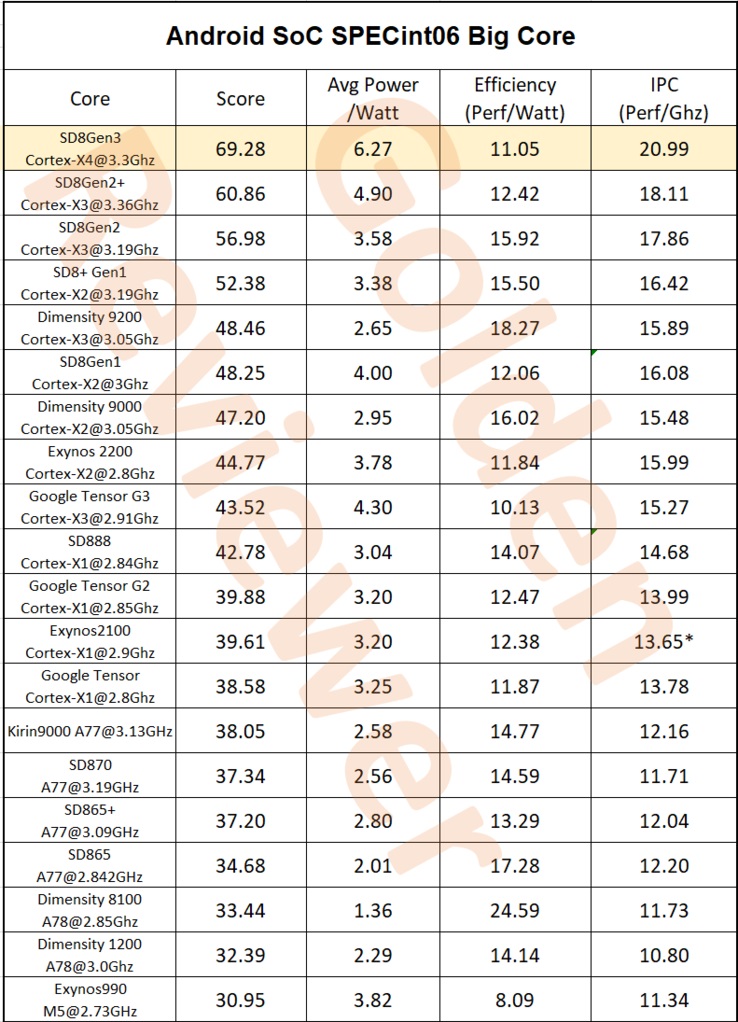Snapdragon 8 Gen 3 is Qualcomm’s next-generation SoC for high-end terminals, a very powerful chip that was installed on the Xiaomi 14 Pro, a high-end terminal that has already arrived in China, and thanks to this, we already have first performance and efficiency tests aimed at next-generation SoCs.
During the Snapdragon 8 Gen 3 presentation, Qualcomm itself talked about the efficiency and performance values of this new chip and emphasized that it will offer up to 30% higher CPU performance and up to 20% lower power consumption. Yes, these are very good values that, if confirmed, would represent an important generational leap, but unfortunately the reality is completely different.
Snapdragon 8 Gen 3 Cortex-X4 core performance
Snapdragon 8 Gen 3 has a different configuration than the previous generation, as it comes with a high-performance 3.3 GHz Cortex-X4 core, five 3.2 GHz Cortex-A720 cores and two Cortex-A520 cores. High efficiency at 2.3 GHz. Well-known Chinese analyst shared a very complete round of tests in which focuses its attention on the Cortex-X4 core, something understandable, since this is the most important innovation of this SoC at the CPU level.
At the performance level, the Cortex-X4 core offers an excellent result. In the SPECint06 Big Core test, this core achieves outperforms the Cortex-X3 core present in the Galaxy S23 (Snapdragon 8 Gen 2+) by 14%and if we compare it to Cortex-X3 Snapdragon Gen 2, the difference rises to 22% in favor of Cortex-X4.


The performance test also includes a comparison with cores from previous generations, such as the Cortex-X1 integrated in the Snapdragon 888 and the Cortex-A78 from the Dimensity 1200. In these cases, the difference in favor of the Cortex-X4 is enormous, as we can see in the attached table, and that doubles the performance of those.
Consumption and efficiency: a step back
We have an important progress in terms of performance, but if we look at efficiency, we realize that the Cortex-X4 values have deteriorated compared to the previous generation. This core consumes 28% more energy than the Cortex-X3 core present in the Snapdragon 8 Gen 2+ and if we compare it to the Cortex-X3 core of the Snapdragon 8 Gen 2, it is even worse because we have a difference of 75%.
He obviously has negative impact on efficiency value Cortex-X4, so much so that it’s actually one of the worst on the table. There is no doubt that performance matters, but when we talk about smartphones, energy consumption is also essential, not only because it affects the heat generated, but also because it largely determines the real autonomy of the terminal. The higher the consumption, the more heat and less autonomy.
